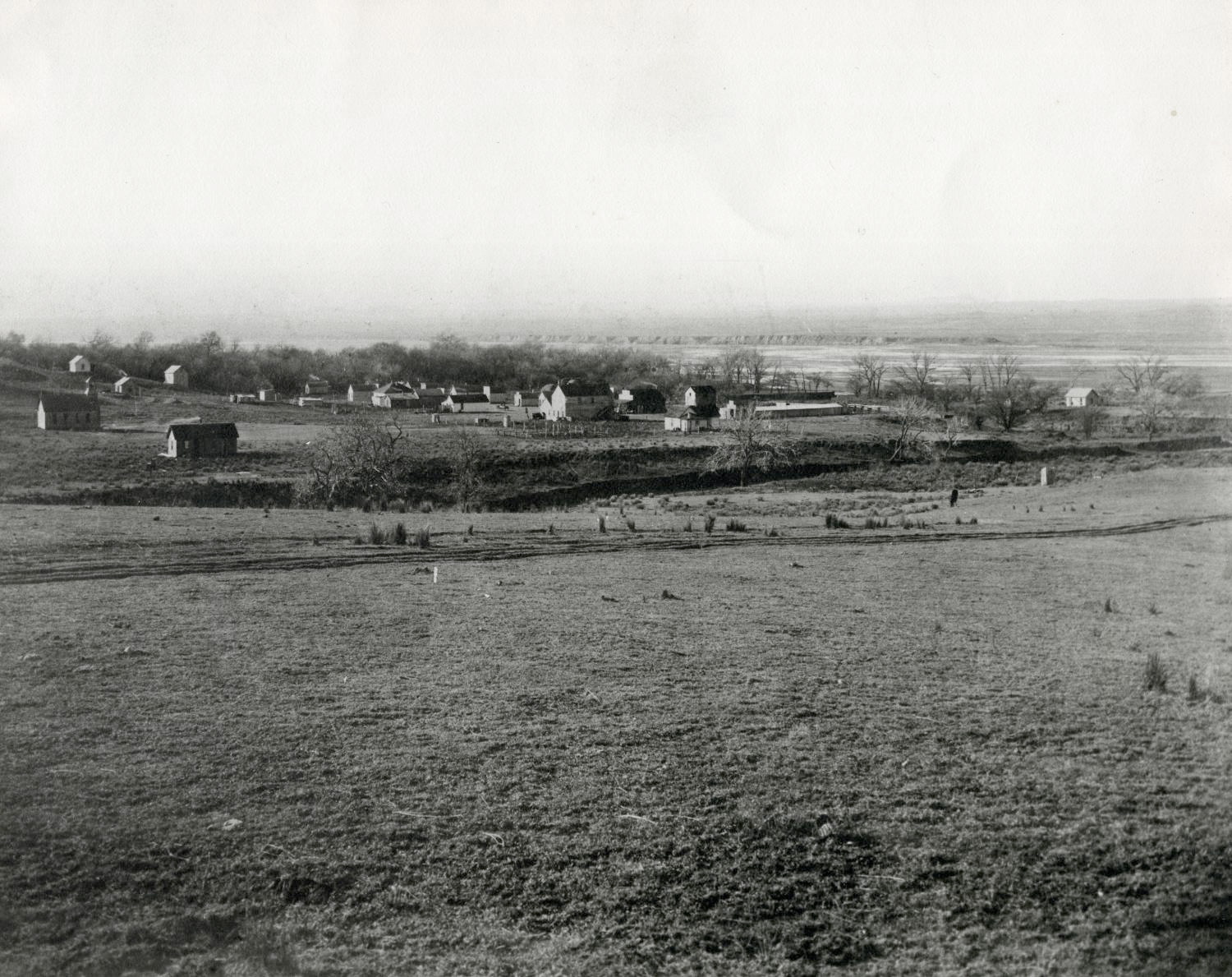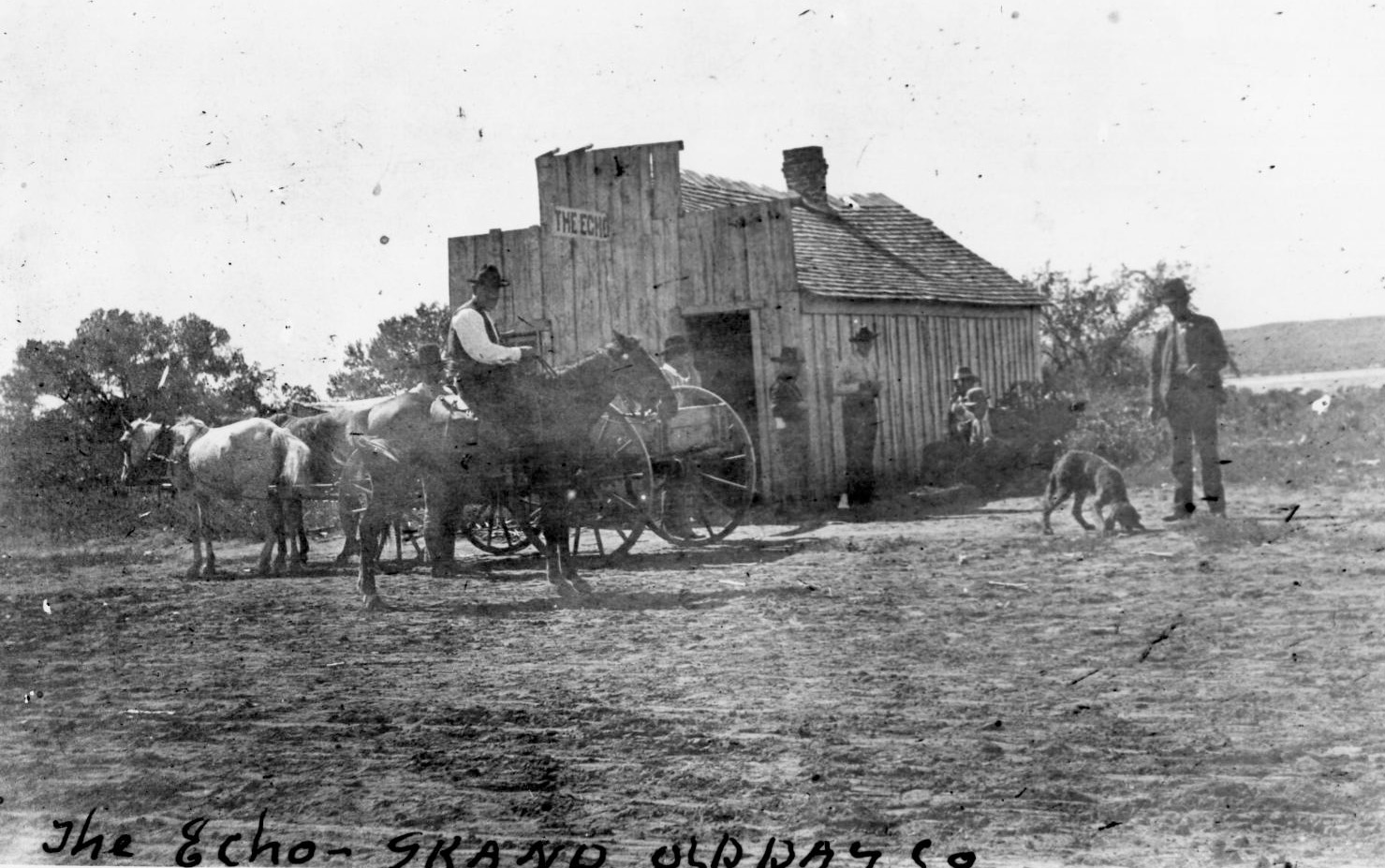
DAY COUNTY.
Existing only for slightly more than fifteen years, through the Territorial Era until statehood on November 16, 1907, Day County was originally created as County E by act of Congress approved March 3, 1891. Bordering the Texas Panhandle, it lay within the Cheyenne and Arapaho lands that opened to non-Indian settlement on April 19, 1892. It was soon renamed Day County, for Charles Day, a contractor who built the courthouse at Ioland. Comprising thirty townships, the new entity was bisected by the meandering main Canadian River. The area's most prominent geographical feature, the Antelope Hills, had been a landmark for both American Indians and for travelers on the California Road during the 1850s.
The seat of government was first placed at Ioland, on the north bank of the Canadian River in the east-central part of the county. In November 1893, by vote of the county commissioners, the seat moved to Grand, also on the north bank of the river but on the west side of the county. A courthouse that was constructed there in December of that year burned in 1896, destroying all of the records. Other than Grand, the only other viable community remained Ioland although numerous post offices reflected the locations of dispersed rural communities.
During the county's brief existence both farmers and cattle raisers made a living on the land. Cotton was an important crop from around 1904. Wheat, oats, corn, peanuts, and sorghum were also produced. The Day County Tribune, printed at Ioland and then at Grand, the Day County Progress, printed at Grand, and the Grand Echo informed the citizens throughout most of the county's short life. In 1900, when the U.S. Census recorded the population of Oklahoma Territory's twenty-three counties, Day County registered 2,173 inhabitants. Former county treasurer David Hogg, of Grand, represented the Forty-third District, Day County, in the Oklahoma Constitutional Convention of 1906–07.
At statehood in 1907 Day County was eliminated. The northern half, north of the Canadian River, became part of Ellis County, and the southern, below the river, became part of Roger Mills County. Grand became Ellis County's seat of government until voters in August 1908 decided that Arnett should fulfill that purpose instead, as it was more centrally located. Through the 1960s the "old settlers" of Day County held an annual picnic at Grand. The Grand town site, fourteen miles south of Arnett, is listed in the National Register of Historic Places (NR 72001063).







